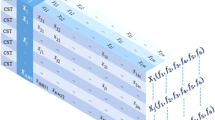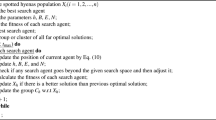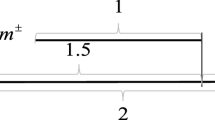Abstract
Mixed-integer optimal control problems (MIOCPs) usually play important roles in many real-world engineering applications. However, the MIOCP is a typical NP-hard problem with considerable computational complexity, resulting in slow convergence or premature convergence by most current heuristic optimization algorithms. Accordingly, this study proposes a new and effective hybrid algorithm based on quantum computing theory to solve the MIOCP. The algorithm consists of two parts: (i) Quantum Annealing (QA) specializes in solving integer optimization with high efficiency owing to the unique annealing process based on quantum tunneling, and (ii) Double-Elite Quantum Ant Colony Algorithm (DEQACA) which adopts double-elite coevolutionary mechanism to enhance global searching is developed for the optimization of continuous decisions. The hybrid QA/DEQACA algorithm integrates the strengths of such algorithms to better balance the exploration and exploitation abilities. The overall evolution performs to seek out the optimal mixed-integer decisions by interactive parallel computing of the QA and the DEQACA. Simulation results on benchmark functions and practical engineering optimization problems verify that the proposed numerical method is more excel at achieving promising results than other two state-of-the-art heuristics.
Similar content being viewed by others
Explore related subjects
Discover the latest articles, news and stories from top researchers in related subjects.References
Kirches C, Fast Numerical Methods for Mixed-Integer Nonlinear Model-Predictive Control, Springer, Vieweg, 2011.
Zhang Q, Sundaramoorthy A, Grossmann I E, et al., A discrete-time scheduling model for continuous power-intensive process networks with various power contracts, Computers & Chemical Engineering, 2015, 84: 382–393.
Ge Y L, Li S R, Chang P, et al., Optimization of ASP flooding based on dynamic scale IDP with mixed-integer, Applied Mathematical Modelling, 2017, 44: 727–742.
Baris B, Nikolaos A D, Justin K, et al., Integrated process design, scheduling, and control using multiparametric programming, Computers & Chemical Engineering, 2019, 125: 164–184.
Berger J, Boukhtouta A, Benmoussa A, et al., A new mixed-integer linear programming model for rescue path planning in uncertain adversarial environment, Computers & Operations Research, 2012, 29(12): 3420–3430.
Floudas C A, Global optimization in design and control of chemical process systems, Journal of Process Control, 2000, 10(2): 125–134.
Garcia-Nieto J, Olivera A C, and Alba E, Optimal cycle program of traffic lights with particle swarm optimization, IEEE Transactions on Evolutionary Computation, 2017, 17(6): 823–839.
Cai S and Liu K, Heuristics for online scheduling on identical parallel machines with two GoS levels, Journal of Systems Science and Complexity, 2019, 32(4): 1180–1193.
Deep K, Singh K P, Kansal M L, et al., A real coded genetic algorithm for solving integer and mixed integer optimization problems, Applied Mathematics and Computation, 2009, 212: 505–518.
Li C and Zhen W, Stochastic optimal control problem in advertising model with delay, Journal of Systems Science and Complexity, 2020.
Schlegel M, Stockmann K, Binder T, et al., Dynamic optimization using adaptive control vector parameterization, Computers & Chemical Engineering, 2005, 29(8): 1731–1751.
Walther A, Automatic differentiation of explicit Runge-Kutta methods for optimal control, Computational Optimization and Applications, 2007, 36(1): 83–108.
Ghawadri N, Senu N, Fawzi F A, et al., Diagonally implicit Runge-Kutta type method for directly solving special fourth-order ordinary differential equations with III-posed problem of a beam on elastic foundation, Algorithm, 2019, 12(1): 12.
Kilinc M R, Linderoth J, and Luedtke J, Lift-and-project cuts for convex mixed integer nonlinear programs linear programming based separation and extended formulations, Mathematical Programming Computation, 2017, 9(4): 499–526.
Nakariyakul S, A comparative study of suboptimal branch and bound algorithms, Information Sciences, 2014, 278: 545–554.
Cakir O, Benders decomposition applied to multi-commodity, multi-mode distribution planning, Expert Systems with Applications, 2009, 36(4): 8212–8217.
Kesavan P, Allgor R J, Gatzke E P, et al., Outer approximation algorithms for separable non-convex mixed-integer nonlinear programs, Mathematical Programming, 2004, 100(3): 517–535.
Arroyo J E C, Leung J Y T, and Tavares R G, An iterated greedy algorithm for total flow time minimization in unrelated parallel batch machines with unequal job release times, Engineering Applications of Artificial Intelligence, 2019, 77: 239–254.
Jalota H and Thakur M, Genetic algorithm designed for solving linear or nonlinear mixed-integer constrained optimization problems, International Proceedings on Advances in Soft Computing, Intelligent Systems and Applications, 2017, 277–290.
He Y, Wang J, Zhang X, et al., Encoding transformation-based differential evolution algorithm for solving knapsack problem with single continuous variable, Swarm and Evolutionary Computation, 2019, 50: 100507.
Lakshminarayanan S and Kaur D, Optimal maintenance scheduling of generator units using discrete integer cuckoo search optimization algorithm, Swarm and Evolutionary Computation, 2018, 42: 89–98.
Cao Y, Rathinam S, and Sun D F, Greedy-heuristic-aided mixed-integer linear programming approach for arrival scheduling, Journal of Aerospace Information Systems, 2013, 10(7): 323–336.
Sahin M and Kellegoz T, A new mixed-integer linear programming formulation and particle swarm optimization based hybrid heuristic for the problem of resource investment and balancing of the assembly line with multimanned workstations, Computers & Industrial Engineering, 2019, 133(7): 107–120.
Kucukoglu I, Dewil R, and Cattrysse D, Hybrid simulated annealing and tabu search method for the electric travelling salesman problem with time windows and mixed charging rates, Expert Systems with Applications, 2019, 134: 279–303.
Engin O and Guclu A, A new hybrid ant colony optimization algorithm for solving the no-wait flow shop scheduling problems, Applied Soft Computing, 2018, 72: 166–176.
Alanis D, Botsinis P, Babar Z, et al., A quantum-search-aided dynamic programming framework for Pareto optimal routing in wireless multihop networks, IEEE Transactions on Communications, 2018, 66(8): 3485–3500.
Crispin A and Syrichas A, Quantum annealing algorithm for vehicle scheduling, Proceedings of the IEEE International Conference on Systems, Man and Cybernetics, 2013.
Crosson E and Harrow A W, Simulated quantum annealing can be exponentially faster than classical simulated annealing, Proceedings of FOCS, 2016, 714–723.
Hen I and Spedalieri F M, Quantum annealing for constrained optimization, Physical Review Applied, 2016, 5(3): 412–416.
Syrichas A and Crispin A, Large-scale vehicle routing problems: quantum annealing, tunings and results, 2016 Computers & Operations Research, 2017, 87: 52–62.
Liu M, Zhang F, and Ma Y, Evacuation path optimization based on quantum ant colony algorithm, Advanced Engineering Informatics, 2016, 30: 259–267.
Wong K H, Jennings L S, and Benyah F, The control parametrization enhancing transform for constrained time-delayed optimal control problems, Journal of the Australian Mathematical Society, 1999, 40: 314–335.
Celia M A, Russell T F, and Herrera I, An Eulerian-Lagrangian localized adjoint method for the advection-diffusion equation, Advances in Water Resources, 1990, 13: 187–206.
Zhang Q, Li S R, Zhang X D, et al., Constraint aggregation based numerical optimal control, Proceedings of the 29th Chinese Control Conference, 2010.
Yibing L V, Tiesong H U, and Wang G, A penalty function method based on Kuhn-Tucker condition for solving linear bilevel programming, Applied Mathematics & Computation, 2007, 188: 803–813.
Kim D, Ryu M, and Lee S, Antipodal Gray codes for structured light, Proceedings of the IEEE International Conference on Robotics and Automation, 2008.
Ali M and Pant M, Improving the performance of differential evolution algorithm using Cauchy mutation, Soft Computing, 2011, 15(5): 991–1007.
Li Z S, Liu Z G, Yu Y, et al., A quantized pheromone ant colony optimization algorithm for feature selection, Journal of Northeastern University (Natural Science), 2020, 41(1): 17–22.
Jiang Z Y, Cai Z X, and Wang Y, Hybrid self-adaptive orthogonal genetic algorithm for solving global optimization problems, Journal of Software, 2010, 21(6): 1296–1307.
Smotherman M and Zemoudeh K, A non-homogeneous Markov model for phased-mission reliability analysis, IEEE Transactions on Reliability, 1989, 38(5): 585–590.
Koutras V P, Platis A N, and Gravvanis G A, On the optimization of free resources using non-homogeneous Markov chain software rejuvenation model, Reliability Engineering & System Safety, 2007, 92(12): 1724–1732.
Neumann F and Witt C, Bioinspired Computation in Combinatorial Optimization, Springer, Berlin Heidelberg, 2010.
Neumann F and Witt C, Bioinspired computation in combinatorial optimization: Algorithms and their computational complexity, Proceedings of the 14th annual conference companion on Genetic and evolutionary computation, 2012, 1035–1058.
Wu L H, Wang Y N, and Chen Z L, Modified differential evolution algorithm for mixed-integer nonlinear programming problems, Journal of Chinese Computer Systems, 2007, 28(4): 666–669.
Tamura K and Yasuda K, The spiral optimization algorithm: convergence conditions and settings, IEEE Transactions on Systems Man Cybernetics-Systems, 2020, 50(1): 360–375.
Lin Y C, Wang F S, and Hwang K S, A hybrid method of evolutionary algorithms for mixed-integer nonlinear optimization problems, Proceedings of the IEEE International Conference on Evolutionary Computation, 2002.
Sager S, A benchmark library of mixed-integer optimal control problems, Mixed Integer Nonlinear Programming, Springer, 2012.
Sager S, Kirches C, and Bock H G, Fast solution of periodic optimal control problems in automobile test-driving with gear shifts, Proceedings of the IEEE International Conference on Decision and Control, 2009.
Author information
Authors and Affiliations
Corresponding author
Additional information
This research was supported by the National Natural Science Foundation of China under Grant No. 61573378 and the BUPT Excellent Ph.D. Students Foundation under Grant No. CX2019113.
This paper was recommended for publication by Editor WU Wenyuan.
Rights and permissions
About this article
Cite this article
Liu, Z., Li, S. A Quantum Computing Based Numerical Method for Solving Mixed-Integer Optimal Control Problems. J Syst Sci Complex 34, 2428–2469 (2021). https://doi.org/10.1007/s11424-020-9278-6
Received:
Revised:
Published:
Issue Date:
DOI: https://doi.org/10.1007/s11424-020-9278-6




